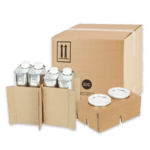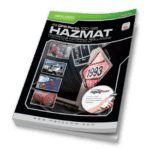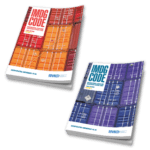As we know, shipping can cause all sorts of damage if you are using corrugated boxes, which is why UN Package testing is so important as it helps us determine if the packaging is suitable for transporting dangerous goods. But what about placards? Placards are an important component if you are shipping dangerous goods by ground or sea, but are there any test requirements that determine if a placard is suitable to use? What are the differences, if any, between the requirements in the United States, Canada, and internationally?
What is Required for Placard Durability?
49CFR
Whether placards are made of plastic, metal, or another suitable material, the 49CFR, TDG, and IMDG code all have similar requirements on placards’ durability. For example, the 49CFR 172.519 (a) (1) gives you the general specifications for placards. Per the 49CFR, placards may be made of any plastic, metal, or other material capable of withstanding, without deterioration or a substantial reduction in effectiveness, a 30-day exposure to open weather conditions. Basically, the 49CFR regulations want to make sure that placards can withstand the various weather conditions presented during transportation, such as cold, rain, wind, snow, sun, and heat. Whatever material the placards are made from must be capable of surviving weather conditions for up to 30 days, including the color of the placards per 172.519 (d) (2). Also, if the placard is made of tagboard, 172.519 (a) (2) gives specific requirements, one of which is to pass a Mullen test which measures the bursting strength of paper or paperboard.
TDG
Similarly to the 49CFR, TDG part 4.6 (b) states that dangerous goods safety marks, which would include placards, must be made of durable and weather-resistant material that will withstand the conditions to which they will be exposed without substantial detachment or deterioration of their color, symbols, letters, text, or numbers. Deterioration is considered substantial if the color of the safety mark fades or darkens so that it is no longer the color that represents the class of dangerous goods associated with it. If placards are exposed to sunlight, for example, the material used must not have a propensity to fade in color. The placards’ colors must continue to display the requirements of part 4.6 (c) (i). Although TDG’s regulations are similar to the weather condition requirements outlined in the 49CFR, the main difference between the U.S. and Canada is that TDG doesn’t specify a 30-day time frame the placards have to be able to withstand the various weather conditions. Also, TDG doesn’t mention any specific requirements on tagboard material.
IMDG Code
If you are shipping by sea internationally, as you know, you must comply with the IMDG code regulations if you are placarding your CTU (cargo transport unit). Section 5.3.1.1.1.2 requires that placards still be identifiable on cargo transport units and bulk containers surviving at least three months immersion at sea. In this case, placards must still be recognizable if they are submerged under the water for up to 90 days. In the event of an accident or a boat partially sinking, it would be important that containers still have recognizable placards so crews would know what type of dangerous goods would be inside to help them determine the best course of action for the cleanup. Although IMDG Code is more general regarding placard durability, just simply stating they must be identifiable, it also mentions a three-month time period that placards should be able to withstand water submersion. This is different from the 30-day weather condition capabilities the 49CFR mentions, and TDG not mentioning a time frame at all. One similarity between all three regulations is that they all require the placards to be durable enough to withstand the conditions of the specific mode of transport. If you are looking for durable placards, visit the placard section of our website or contact us at 1-888-442-9628 in the USA or 1-888-977-4834 in Canada.
Stay up to date and sign up for our newsletter!
We have all the products, services and training you need to ensure your staff is properly trained and informed.
 Custom Packaging Design |
 US 49 CFR Publications |
 Canadian TDG Publications |
 IMDG Publications |






